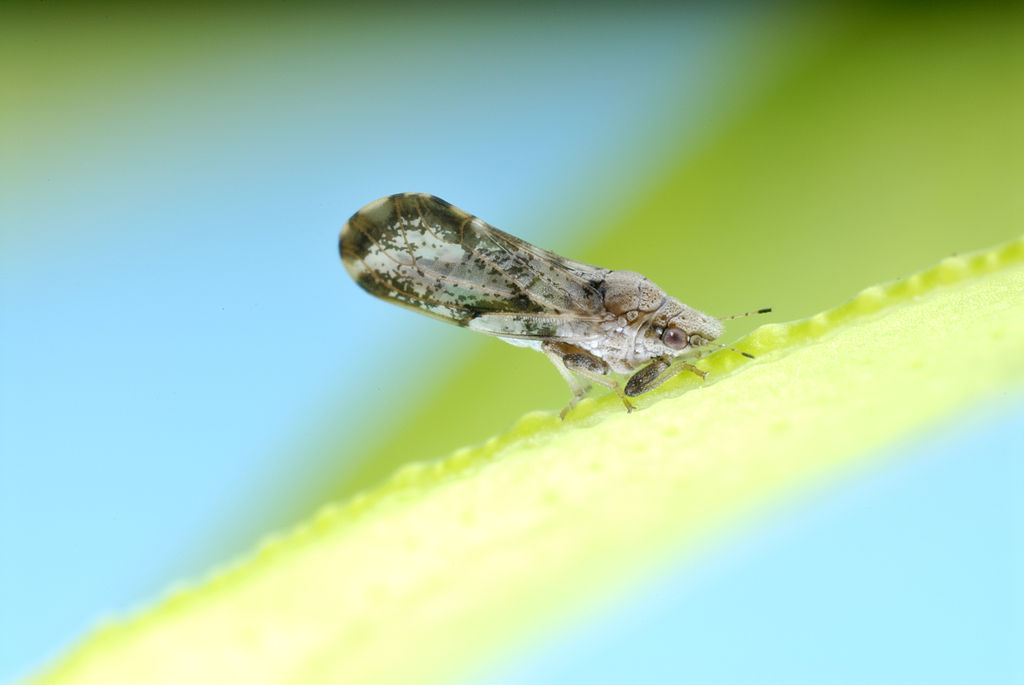Promising lab studies show how to stop psyllids in their tracks
Citrus greening, also known as Huanglongbing (HLB), has been rapidly infecting citrus groves all around the world. Since the first detection of the disease in south Florida more than eight years ago, citrus greening is now a well-known threat, due to its particularly devastating effects in Florida. In October of 2013, Central Florida Ag News featured a story on Dr. Nabil Killiny, Assistant Professor of Vector Entomology at the University of Florida’s Citrus Research and Education Center; he and his team of scientists were working on a promising genetic method of disabling the Asian citrus psyllid, the insect responsible for the continued spread of citrus greening. He and his associates now have some interesting new developments.
Using the same technique he used to induce dsRNA to reduce abnormal wing disk proteins in psyllids, Killiny is now targeting muscle protein genes. This dsRNA interferes with the protein production in psyllid when the pest acquires it from trees, and Killiny is proposing the use of this genetic technique for “trap trees” around the borders of groves. RNA interference efficiency is much better for muscle. Upon feeding on these trees, the psyllids will ultimately “be handicapped: the psyllid won’t be able to fly, eat, mate or lay eggs.”
Killiny explains that there is a three a step model for stopping the psyllids in their tracks—1) Attracting the psyllid 2) Getting the psyllid to settle and feed 3) Killing or handicapping the psyllid.
Through several experiments, Killiny determined that the Asian psyllid is most attracted to the color yellow. Therefore, he knew that they needed to lower the levels of chlorophyll and other pigments in the leaves to make them appear more yellow to attract the insect. However, it is important to note that the chlorophyll isn’t lowered too much, because it would decrease the richness of the phloem of the plant, where psyllids feed.
Once the insect has been attracted to the “trap plants” on the borders of the groves, it will begin to settle and feed. Psyllids feed on the rich, nutritious phloem sap of citrus trees. Once they start feeding on Killiny’s trees, the psyllids will be consuming a plant genetically modified with muscle proteins; hence, muscles all over their bodies will be impaired. Psyllids typically feed off of the new, tender shoots of citrus trees because they are more yellow-green in color and softer, rather than dark green or brown and thicker like the more mature leaves. But through his experiments, Killiny has discovered that “they just love these trees. They feed all over the tree—not just on the new flush.” He also discovered that this application works particularly well with the Citrus Microphilla cultivar.
Ca+, a muscle contraction regulator, is detectable on a CT scan; the accumulation of calcium shows up on a CT scan of psyllids, similar to the way human bones are visible on CT scans. This is the method Killiny used to verify that the muscle proteins had been effective on the psyllid. It is important to note that these trees have been engineered to drop their blooms so no fruit is produced. The trap trees are not intended to be used as fruit yielding trees—only as borders for groves in an effort to thwart the Asian psyllids infection and destruction of Florida groves. As of now, this technique is only being used in a lab setting but has promising future field applications.
CREDIT
story by JULIE GMITTER

